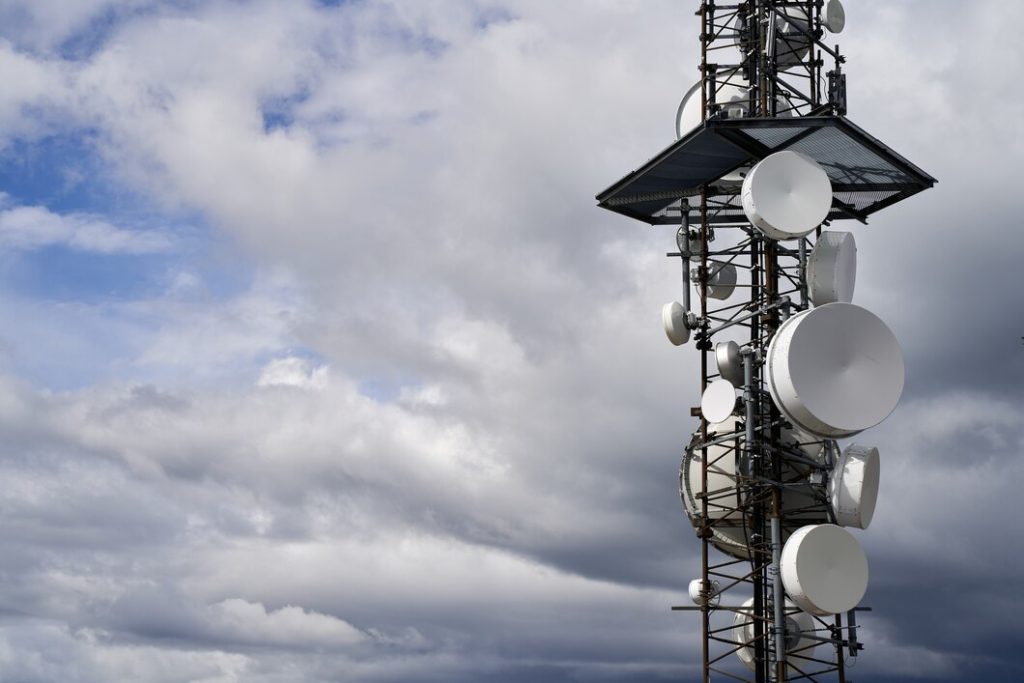What is a Communication Tower? Exploring Its Importance
2025-03-04
What is a Communication Tower? Explores their Significance
The global telecommunications network depends extensively upon communication towers for its operation. The tall structures operate as signal transmitters which enable mobile phones along with radios television sets and internet connections. The actual structures behind communication towers need explanation. What is a communication tower? How do they work? The following article examines communication tower definitions as well as their core functions and multiple categories along with their technological details during construction and their environmental effects.
What is a Communication Tower?
Communication towers serve as telecommunication towers which function as structural frameworks that host radio transmission and television and telephone signal equipment. Wireless communication depends greatly on these towers which serve to transmit signals between antennas and electronic devices for telecommunications. The definition of communication towers relates directly to their essential function of connecting human beings through electromagnetic waves across extended geographical areas.
Wireless communication technology depends on communication towers that enable mobile networks together with radio broadcasting systems and wireless internet access. Network reliability depends on these modern infrastructure components which specifically enhance service coverage in distant locations.
Purpose of Communication Towers – Why Are They Important?
The main responsibility of communication towers involves creating signal transmission platforms that extend coverage across expansive distances. These devices enable the smooth delivery of data signals to their final destinations regardless of whether the information travels through cellular networks or TV broadcasts or provides internet access.
The antennas mounted on the towers broadcast radio frequency (RF) signals. The signals transmitted from these structures enable mobile devices to link up as well as allow radio equipment to broadcast information and the public to access mobile data networks and internet services. The establishment of communication towers represents an essential component of 5G infrastructure because they improve both speed and reliability in internet connection.
Telecommunication Tower: An Essential Infrastructure for Communication Networks
Modern communication depends heavily on the fundamental infrastructure provided by telecommunication towers which people also refer to simply as towers. These structures have been engineered to hold antennas alongside communication devices for transmitting television together with radio and telecommunication signals into long-distance spaces. Telecommunication tower infrastructure stands essential for delivering continuous connection between devices and networks due to growing communication service requirements.
Types of Towers
Telecommunication towers exist in various forms that suit unique requirements for installing communication equipment. These are the main types of communication structures among others:
Lattice Towers
Steel-made lattice towers have excellent strength which makes them suitable for antenna and communication system support. Telecommunication towers serve purposes at both metropolitan and rural sites.
Monopole Towers
The monopole tower serves as a single expanded pole designed for telecommunication purposes. Urban environments make use of monopoles instead of lattice towers because they provide both efficiency and aesthetics when space availability is limited.
Guyed Towers
The structure stands through guy cables which function as anchors that keep it grounded. Guyed towers serve elongated facilities requiring higher elevations because they need extensive space which makes them suitable for rural locations that are not highly populated.

Telecommunication Tower Design Parameters
Several critical parameters influence telecommunication tower design because they determine its operational excellence and durability.
Meteorological Conditions:
Telecommunication tower designs need to incorporate local weather condition data about wind speeds and ice formation since these elements affect both the stability and operational fitness in severe climate environments.
Tower Height:
To provide maximum signal coverage the height of the tower must be carefully considered. Confined population locations benefit from taller towers since these structures boost coverage radius to reach larger geographical areas.
Antenna Quantity:
The design selection depends on the number of antennas that will be placed on the tower. A tower that supports multiple antennas must have the strength to endure the augmented weight.
Foundation Construction Conditions:
The stability of a tower depends on the foundation which performs a critical role. A foundation with strong and secure construction becomes vital for stability because it prevents both tilting and collapse specifically in regions with weak soil foundations.
Tower Form:
Telecommunication towers exist in options that include either three-legged or four-legged construction based on how much stability is needed together with space available for construction. The structural form together with its design elements enables the structure to endure external environmental triggers like wind pressure.
Tower Construction:
Construction materials represent a core element that determines how long the tower will endure. The tower material selection stems from angle steel, steel tubes, or monopole structures depending on both intended environmental conditions and necessary loads.
The integration of these design parameters enables telecommunication towers to deliver dependable telecommunications throughout all environments. The correct building of towers strengthens telecommunication network resources and provides better mobile phone network connectivity together with televised content distribution and internet service.
How Do Communication Towers Work?
Communication towers enable wireless signal transmission through antennas that send and receive radio waves and microwave signals. Here’s how they work:
Signal Transmission:
The Base Transceiver Station (BTS) produces radio signals through its communication equipment.
Signal Amplification:
The antennas boost the transmitted signal so the broadcasting area expands.
Signal Reception:
Mobile devices radios and televisions take signals from antennas to produce data that users can use (voice or video and other formats).
Relaying:
The relay process with microwave towers allows extended signal transmission between two towers. The combination of signal-strength technologies with frequency assignments and radio frequency (RF) broadcasting systems produces reliable and efficient communication.
Communication Tower Construction – The Engineering Behind the Structure
The process of constructing a communication tower requires detailed strategic planning and design work. Engineers must begin the construction process by studying site criteria choosing tower features and following all regulatory standards. The following sequence explains how a communication tower gets built:
Design:
Engineers choose the appropriate tower type through evaluation of its intended use together with environmental elements and available location possibilities.
Foundation:
Construction of the foundation requires a design that carries both tower weight and elevation. The work includes putting concrete and adding steel reinforcements.
Installation:
Specialized equipment together with cranes builds the complete tower at its installation location. The installation team places communication antennae together with other network equipment.
Safety:
Safety measures within the project actively protect personnel from harm while construction teams follow both safety regulations and standards in every stage from construction through maintenance periods.
Regular Maintenance of Communication Towers
Regular maintenance exercises an essential role to maintain the smooth operation of communication towers. The maintenance process includes a structural evaluation of the system together with antenna testing and equipment and cable assessment. To minimize risks tower operators need to follow both safety regulations as well as standards.
Conclusion
A communication tower plays a vital role in the modern communication infrastructure by supporting wireless signals for various services, from mobile phone networks to radio, television, and satellite communications. These towers, often tall and strategically placed in various locations, facilitate the transmission of signals over long distances, ensuring reliable connectivity for personal, business, and emergency communications. Understanding the types, components, and functions of communication towers is essential for grasping their impact on daily life and technological advancements.

Привет, я Чуньцзянь Шу
"X.Y. Tower: Надежные, инновационные решения для высококачественных башен и электрооборудования с профессиональным сервисным обслуживанием.
